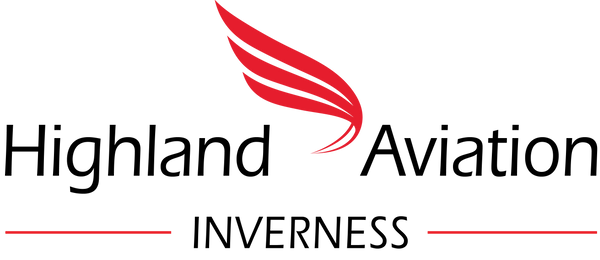UK FI(G) - Flight Instructor Gyroplanes Course
Next Course starting: November 2025 (apply now!)

Introduction
If you are reading this page you are probably already a qualified Gyrocopter Pilot who knows the unparalleled joy and delight of flying these wonderful aircraft. Now imagine if you could get paid to pass on your knowledge and experience! Well that opportunity exists, and if you ask those that are already doing it, they will tell you why they wouldn’t want to do anything else.
With the increased popularity of Gyrocopters since the modern, safe and reliable factory-built aircraft became available in the early 2000’s, there has been a corresponding requirement for new instructors. Currently the UK only has around a dozen full-time instructors, with approximately the same number of part-time instructors, many operating in semi-retirement. There is a clear demand for more instructors, and for more Gyroplane Flying Schools around the UK. Will you be the next to qualify?
Highland Aviation was the first UK Gyroplane School to hold CAA Approved Training Organisation (ATO) certification (UK.ATOG.0001). This certification qualifies us to carry out UK Flight Instructor (FI(G)) and Commercial Pilot Licence (CPL(G)) Courses. All Highland Aviation Gyroplane Instructors are IAPGT certified in order to deliver the latest “Best Practice” courses meeting and exceeding the UK PPL(G) syllabus requirements.
You will understand, therefore, that places are limited each year as demand often exceeds the capacity of our Instructors. Please contact us for further information or to register an expression of interest.
Minimum requirements to becoming a Flight Instructor (Gyroplanes):
Step 1 - Prerequisites to complete the FI(G) flying training course
- PPL(G) holder with a current Certificate of Revalidation.
- 150 hrs flown P1 on any flying machine of which 100 hrs must have been flown on a gyroplane. This flight experience must have been attained since the issue of the PPL(G).
- 30 hrs flown P1 on cross-country flights i.e. a flight where a landing is made at an aerodrome at least 25nm away from the departure aerodrome. Demonstrated by personal log entries, landing at airfields with:
- Full ATC or FISO service
- A radio service
- Non radio
- Demonstrate to an FIC(G) or FIE(G) an excellent flying capability, knowledge of the handling characteristics of the aircraft, and the ability to land the aircraft in the event of a real or simulated emergency.
- It is not unusual for newly qualified pilots to start the Theoretical Knowledge Training soon after qualifying, then to go through a mentored hour-building programme, before doing the Pilot Development Course, and then directly continue on to the Instructor Flight Training Course. It is generally better to express your interest sooner rather than later, as you want your hour-building to really count towards your development. We often find that qualified pilots with many hundreds of hours under their belt, have practised their bad habits to perfection, resulting in the course being more challenging than the less experienced pilots.
Step 2 - Theoretical Knowledge Training (Part 1 of the course)
Next Course starting: November 2025
- Conducted by a Flight Instructor Course Instructor FIC(G), the course will include at least 125 hours of theoretical knowledge instruction, including at least 25 hours teaching and learning instruction. The remaining 100 hours of practical Theoretical Knowledge Instruction is based upon the PPL(G) syllabus, (including Theoretical Knowledge syllabus).
- Around 90 hours of initial theoretical knowledge will be taught as a class over three 1-week courses, taking place in November, January and February. Note due to trainee numbers the Theoretical Knowledge Training course (Part 1) is usually only presented every two years.
- All remaining theoretical training (around 35 hours) will take place during one-to-one training which incorporates the flying skills required of a flight instructor (in Part 2 of the course).
Step 3 - Flight Training (Part 2 of the course)
- The course comprises 30 hours of flight instruction in a 2-seat gyroplane. Up to 10 hours of credit may be applied if you have previously completed the IAPGT Pilot Development Course. The air exercises studied in the course are similar to those used for the training of PPL(G), (as per Appendix A of Standards Document 44), but with additional items designed to cover the needs of a Flight Instructor.
- During this course you must demonstrate that you can teach the entire PPL(G) syllabus. This includes emulating all the different flights that are contained in the PPL(G) syllabus together with all the flight briefings. You are also required to be able to demonstrate that you can teach the ground school examination topics.
Step 4 - Completion of the course
- On completion of the course you will need to pass an Instructor rating flight examination, undertaken with a Flight Instructor Examiner FIE(G).
- At this stage you will be awarded with a Flying Instructor Restricted rating FI(G)(R). This will allow you to train students, but only under the direct supervision of an unrestricted Flying Instructor FI(G).
- In order to become unrestricted, you must satisfy a number of experiential requirements as published in CAA Standards Document 44 (see below).
- You must have a further flight examination with an Flight Instructor Examiner FIE(G) in order to have the restriction removed.
- You may then open your own Flying School and work independently if you wish.

